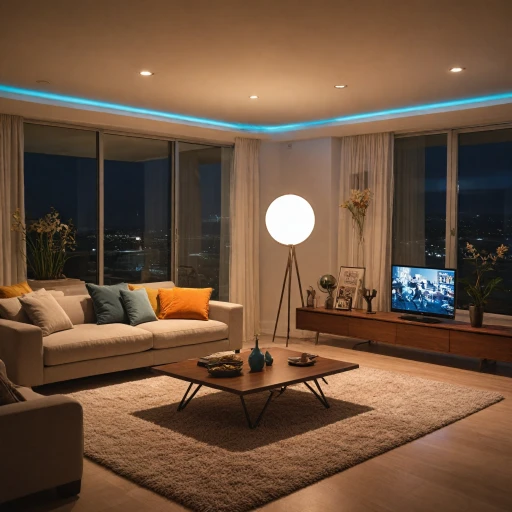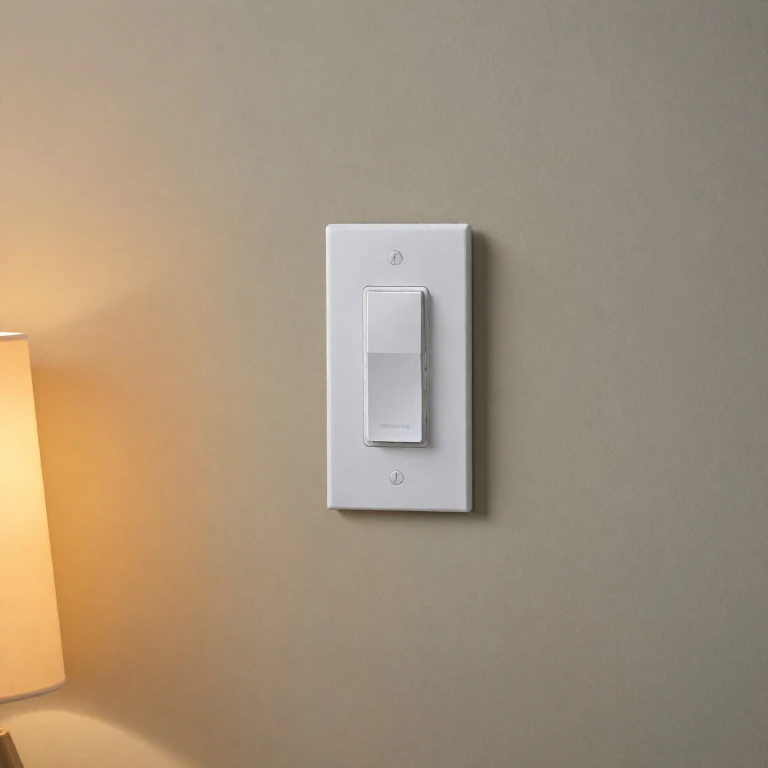What is a Smart Switch Without a Neutral Wire?
Introduction to the Neutral-Less Smart Switch
Understanding lighting solutions is key to enhancing the functionality and aesthetics of your space. A smart light switch without a neutral wire is an innovative device that caters to older homes and outdated wiring systems, where neutral wires are absent from the switch box. This means that the switch operates without one of the wires typically required in modern wiring setups.
The smart switch is engineered to connect with other smart home devices through apps, enabling remote control over your lighting directly from your smartphone. With dimmers and single pole configurations, these switches offer plenty of flexibility in managing lighting preferences.
A commonly used design for these smart switches is the decora style, ensuring that they blend seamlessly into your home's existing decor. The decora smart switches and dimmers by established brands, such as Leviton, provide various options that fit right into your wall switch without needing to rewire your home.
Although many smart devices like the smart bridge or power-saving LED solutions require a neutral wire for installation, these specific light switches accommodate homes lacking that wiring component. With careful evaluation of your existing setup, you can select the right solution that enhances smart lighting in your space effectively.
Curious about how these devices affect light bulb color temperature? Read more about it
here.
Why Choose a Smart Switch Without a Neutral Wire?
Advantages of Choosing Smart Switches That Don’t Require a Neutral Wire
Incorporating smart switches into your home's lighting system is an excellent way to enhance convenience and control, especially when you opt for a model that doesn’t require a neutral wire. These switches offer significant advantages that often outweigh the challenges.
Firstly, smart switches without the need for a neutral wire enable seamless upgrades for older homes where neutral wires may not be present in the switch box. This can be particularly beneficial in historic or pre-1980s homes, where retrofitting new wiring would be cumbersome and costly. By selecting smart switches that accommodate existing wiring frameworks, homeowners can enjoy modern features without extensive rewiring.
Furthermore, a neutral wire is usually essential for powering smart devices as it maintains a complete circuit even when the switch is off. However, for systems where a neutral wire isn’t available, smart switches have been innovatively designed to bypass this requirement. They perform by trickling small amounts of power through the light bulb to the ground, sufficient to keep the switch’s smart circuitry active without illuminating the LED lights.
Another compelling reason to consider these smart switches is their compatibility with smart home ecosystems. Many options are available that integrate seamlessly with popular smart home systems such as Amazon Alexa, Google Assistant, and Apple HomeKit. This ensures that users can control their lighting through various methods, including voice commands, which enhances the convenience of managing home lighting setups.
Moreover, smart switches are often compatible with a wide range of light bulbs, including dimmable LEDs, incandescent, and fluorescent lights, providing flexibility in choosing your preferred smart lighting system. Notably, brands like Leviton Decora make variety of reliable options available on the market that support smart home automation without needing a neutral wire.
Lastly, by opting for such switches, homeowners can improve their home’s energy efficiency. As these devices optimize switch functionality and enable effortless control over lighting, it consequently leads to reduced electrical wastage. Given that smart dimmers also pair with these switches, there is an added benefit of controlling the light intensity according to necessity, further contributing to energy savings.
Excited to see all the ways you can enhance your home with these innovative solutions? Discover more about the advantages of a Bluetooth light switch and take your smart lighting to the next level with this
insightful guide.
Installation Considerations and Challenges
Important Steps for Successful Installation
Installing a smart switch without a neutral wire can be slightly more complex than installing standard light switches, yet it's quite feasible with the right guidance. A key consideration is understanding the setup of your existing switch box. Many older homes may have switch boxes without the necessary neutral wire. Since smart switches often need power, the absence of a neutral wire presents challenges that need addressing beforehand.
First, it is essential to ascertain if your switch box has a neutral wire or determine if your chosen smart switch requires one. If you find a neutral wire isn't present or the switch you have in mind doesn't need one, you'll want to opt for solutions specifically designed for this scenario.
Devices like smart dimmers or decora smart switches are popular choices due to their flexibility in various wiring setups. However, it’s crucial to verify the compatibility of these decora smart devices with your lighting systems to avoid hassle later on. The instructions accompanying your smart switch will typically detail the required steps to ensure a smooth installation process.
Factors Influencing Installation Success
Before you begin, consider these points to ensure a successful installation:
- Switch Type and Technology: Choose switches designed for single pole setups if that's what your system requires.
- Control Methods: Some switches offer app control, allowing you to manage your lighting remotely.
- LED Lighting Compatibility: Not all switches work with LED lighting. Ensure your smart switch supports the type of lighting installed.
- Power Consumption: Devices like dimmer switches often demand a constant power source, which can be managed even without a neutral wire.
Handling Challenges
One common challenge in installations is the space within the wall switch. Given the additional components involved, smart switches can be bulkier, which might necessitate adjustments to accommodate them. Also, consider whether a smart bridge is needed, as some systems might require this for better connectivity and integration with other smart home devices.
Ultimately, careful attention to these considerations can mitigate most installation challenges. For more in-depth insight into related smart home products, you may find it helpful to explore the
benefits of a Z-Wave thermostat, which can complement smart lighting systems in enhancing your home's efficiency.
Compatibility with Smart Home Systems
Compatibility with Your Smart Home Ecosystem
When considering smart switches without a neutral wire for your lighting needs, it’s crucial to ensure they are compatible with your existing smart home infrastructure. This factor can impact how seamlessly you integrate your new switch into your current setup, especially if you are keen on maintaining a cohesive smart lighting experience.
- Smart Home Platforms: Always verify that the smart switch can communicate effectively with platforms like Google Assistant, Amazon Alexa, or Apple HomeKit. Often a smart bridge or hub is needed to mesh these technologies, which helps to consolidate control over devices like dimmers or Leviton Decora switches.
- App Control: Most smart switches without a neutral wire require an app to manage functionalities. It’s essential to check that the switch's app is compatible with your mobile device's operating system and offers the functionalities that suit your needs, such as scheduling or adjusting the dimmer settings for LED lights.
- Power and Signal Requirements: While these smart switches eliminate the need for a neutral wire, ensure that your home's electrical setup, including the switch box, can support the new device. You may need to evaluate if the power requirements or signal strength to control the switches align with your home’s layout.
- Integration with Other Devices: If you’re using single pole configurations or have specific lighting requirements, like smart dimmer functions, confirm that the smart switch can integrate without issues into your smart home network. This is particularly important if your setup includes various brands or types of smart devices.
Given these considerations, opting for smart switches that align well with your smart home system can enhance the overall efficiency and usability of your lighting controls. Remember, well-integrated smart lighting solutions not only offer convenience but also contribute to the energy efficiency and ambiance of your living spaces.
Maximizing Efficiency and Performance in Smart Lighting
When it comes to energy efficiency and performance, smart switches without a neutral wire offer some benefits that can make a significant difference in your home. Unlike traditional light switches, smart switches are designed to optimize the use of power, and this is particularly evident in configurations that don't require a neutral wire.
Smart light switches come equipped with advanced technology that ensures your lights operate at optimal efficiency. This is crucial in saving energy, as these switches can precisely control the amount of power going to each bulb. By installing a smart dimmer, users have the flexibility to adjust lighting levels, which not only creates the perfect ambiance but also conserves energy by reducing unnecessary power consumption.
Moreover, many smart switches allow you to control your lighting remotely through a compatible app or smart home system. This capability ensures that lights are only on when they need to be, further enhancing energy efficiency. The convenience of this feature means you can turn your lights on or off no matter where you are, preventing unnecessary energy waste.
The performance of smart switches without a neutral wire is also noteworthy in that they are designed to handle low-voltage LED and CFL bulbs efficiently. This is critical, as these types of bulbs are now more common due to their longevity and efficiency benefits.
Additionally, many smart lighting systems integrate with other smart devices in the home, using hubs or smart bridges to enhance performance. By connecting light switches with other smart home devices, users can create automated scenes or routines, which can help manage energy use more effectively.
While considering a switch upgrade, it's essential to note that device compatibility and power requirements play a significant role in the overall energy efficiency and performance of your smart lighting system. Factors such as whether your switch box can accommodate the new technology or needing a neutral wire can impact how seamlessly the switch integrates into your home environment and its subsequent performance.
Top Smart Switches Without a Neutral Wire on the Market
Leading Smart Switches Without a Neutral Wire Available Today
Navigating the market for smart switches without a neutral wire can seem daunting, but rest assured, there are excellent options available for enhancing your smart lighting system. These devices allow you to maintain the sleek aesthetics and functionality typical of modern smart homes without the need for extensive rewiring.
- Lutron Caseta Wireless Smart Lighting Dimmer Switch: Known for its versatility, this switch fits in a standard wall switch box without requiring a neutral wire. It's designed for easy integration with major smart home platforms, providing seamless control over your smart lighting.
- GE Cync Smart Switch: A user-friendly option that does not demand a neutral wire. This switch easily pairs with your app for customized control and works well with LED, CFL, and incandescent lights. It's a great choice for those looking to take their smart lighting to the next level.
- Leviton Decora Smart Switch: Leviton offers a decora smart switch that allows you to install a smart switch without a neutral wire. It provides a simple solution for controlling single pole lighting setups and supports various smart home systems, delivering impressive performance.
Each of these smart switches is tailored to work without a neutral wire, eliminating one of the primary challenges associated with upgrading legacy lighting systems. Ensure compatibility with your existing smart home setup to harness their full potential, tapping into the power of smart light technology without the additional work of rewiring.

